#Khasavyurt
Text
Jewish cultural center in Nalchik city of Kabardino-Balkaria Republic in Caucasus region in Russia was burned. They wrote "Death to yahuds" on the buildings. In Khasavyurt, Republic of Dagestan, Russia, a crowd of people stormed a hotel because someone in Telegram claimed that there are "refugees from Israel" in this hotel. In Makhachkala, Chechen Republic, Russia, a crowd stormed the airport expecting a flight from Tel-Aviv and checking all the exiting cars including police cars to see if there are any Jews hiding inside.
So, maybe if you want Jewish people in Israel to go back to where they came from or stay in their countries, maybe this isn't something you should do?

47 notes
·
View notes
Text

Russian soldiers sit around a fire near Khasavyurt, Dagestan at the Chechen border while awaiting orders to invade, 22 December 1994.
38 notes
·
View notes
Text
The anti-Semitic riot at the Makhachkala airport on Sunday came as a “shock” to the Putin administration and constituted a “total emergency” for the president’s team, Meduza has learned from sources close to the Kremlin and the country’s ruling United Russia party.
According to one person close to the Putin administration, at the beginning of the recent wave of anti-Semitic incidents in the North Caucasus, officials and political strategists who work in the administration sent each other videos of Dagestan residents “looking for Jews.” They shared the clips “just for laughs,” the source explained.
On October 28, residents of the Dagestani city of Khasavyurt gathered at the Flamingo Hotel after a Telegram channel posted rumors suggesting the hotel was “full of Jews.” The same day, people in Cherkessk, the capital of Russia’s Karachay-Cherkess Republic, held an anti-Israel rally, where they demanded that Jews be “expelled” from the region. The following morning, on October 29, unidentified arsonists set fire to an unfinished Jewish cultural center in the town of Nalchik in the Kabardino-Balkarian Republic.
But it wasn’t until Sunday evening, when anti-Semitic rioters broke into the Makhachkala airport, that members of the administration “realized the situation was far from a joke,” one source told Meduza.
The local authorities in Dagestan were quick to blame the unrest on “enemies and Banderites.” The Kremlin announced that Vladimir Putin plans to hold a “major meeting” to address the riots, and his press secretary Dmitry Peskov told journalists that the topics of discussion will include “the West’s attempts to use events in the Middle East to divide Russian society.”
Meduza’s sources said the Putin administration will most likely blame the riots on Ukrainian intelligence services in its official statements. However, a source from the office of the Presidential Envoy to the North Caucasus told Meduza they believe it would be difficult for anyone to organize a gathering as large as the airport riot over an issue that doesn’t directly affect Dagestan — unless someone from the local political establishment was involved. In other words, the source believes that individuals who are dissatisfied with Dagestan Governor Sergey Melikov likely played a role in the unrest.
Melikov comes from a military background; after fighting in the First Chechen War, he became the Presidential Envoy to the North Caucasus before serving as the deputy of Russian National Guard Director Viktor Zolotov. An acquaintance of Melikov told Meduza that Melikov’s approach to governing Dagestan is “actually quite simple”: “Many people in the Caucasus have ties to the Islamic underground, and this needs to be forcefully eliminated. He’s seen enough of war. Plus, he believes in using a firm hand and a vertical structure.” The source said this approach has led to numerous conflicts between Melikov and other influential Dagestanis.
The Kremlin believes that the country’s security forces “overlooked the situation in Dagestan” and did too little to “work with the population on the issue of anti-Semitism,” according to Meduza’s sources. At the same time, a source who is in contact with the Federal Security Service (FSB) and other law enforcement agencies said that the security community believe it was the Kremlin’s failure that led to the unrest. “Interethnic relations is their domain. Prevention is what’s important here — working with influential opinion leaders and curbing the influence of undesirable individuals. If that’s not taken care of, you end up with a fire,” said the source.
At the same time, the source noted that the weekend’s anti-Semitic riots are unsurprising given the numerous protests Dagestan has seen in recent years: “There are social problems — people are unsatisfied with their lives.” In summer 2023, for example, residents of the republic held multiple street protests against power and water outages, and in the fall of 2022, Dagestan was the site of the country’s largest anti-mobilization protests.
Not a single one of the sources Meduza spoke with expects to see major personnel changes in the wake of the anti-Semitic incidents in the North Caucasus. “The war is a contributor — now is not the time for internal disputes,” said one source.
Two sources close to the Kremlin said they’re confident Russia’s leaders will manage to “curb the negative effects” of the airport riot through propaganda. State-run TV networks have already aired segments about how the local authorities competently handled the unrest while also describing the rioters as “protesters with anti-Israel slogans.” “It should be emphasized that anti-Semitism is not what we’re dealing with here. People are specifically unhappy with the actions of the State of Israel,” said a source close to the Putin administration.
Another source acknowledged that the events in the North Caucasus could create rhetorical difficulties for the Kremlin’s political bloc in its preparations for the 2024 presidential elections. According to him, the riots will make it harder for Putin to sell a message about “national harmony” and the “peaceful coexistence” of Russia’s various ethnic groups. At the same time, the sources said they doubt this will be a serious problem for the Kremlin: “[People have even] forgotten about the Wagner revolt. They’ll forget this too.”
4 notes
·
View notes
Text
10.23-31.23
New list of things that have happened on Tik tok that I haven't seen here on tumblr. I got all this information last night and due to how Tik Tok works, some of it could have happened a few days ago. Likes do nothing since I think Tumblr is hiding Pro-Palestine posts:
10.31.2023 (Palestine): Isreal awknowledged an airstrike on a refugee camp to "kill a high ranking Hamas soldier". Wall Stree Journal questioned why they would airstrike a camp known to house civillians, an IDF spokesperson responded with "It's the consequence of the horrors of war." (I couldn't find a specific link for it since there's not any new information to find the article).
10.31.23 (Yemen): The Houthis, a Yemeni resistance group, have joined in the conflict. They've claimed a few missile attacks on Isreal (including possibly the one on Taba, Egypt and one that might have inadvertanly hit Jordan) and have sent drones and missels across the Red Sea, which the U.S navy had shot down. As a result, Iran is getting pulled into the conflict, as they are a sponser for the group.
10.28-29.23 (US; Russia): U.S Navy is getting involved. Alledgedly, this is to help Americans in the area. There is also an uptick in antisemetic attacks In Russia; mobs of people were flooding a Dagestan airport from Tel Aviv in search for Jewish passengers. They later surrounded a hotel in Khasavyurt where they believed Israelis were staying. Police later admitted letting some of the people inside to prove there were no Israelis inside the hotel.
4 notes
·
View notes
Text

Khasavyurt, Dagestan. 📸Nikolay Khizhnyak
0 notes
Text
In Dagestan, residents protesting the mobilization blocked a federal highway, police fired shots into the air
1:27 pm, September 25, 2022
Source: Ask Rasul
On September 25, residents of the village of Endirey in the Khasavyurt region of Dagestan blocked the Khasavyurt-Makhachkala federal highway.
According to the Telegram channel “Ask Rasul,” residents are protesting the Russian mobilization. The channel “Here’s Dagestan” reports that 110 men were called up for mobilization from the village, and people took action to protect their sons, brothers, and husbands. About 8.4 thousand people live in the village. Footage from eyewitnesses shows police trying to disperse the protesters by firing into the air. It is unclear whether there were any injuries or arrests.
#indigenous#indigenous russian#indigenous russia#culture#russia#important#colonization#fypシ#fypage#landback#dagestan#russia ukraine war#Ukraine#mobilization#Text#Putin#no to genocide#Genocide#No war#Racism#colonialism#land back
11 notes
·
View notes
Text
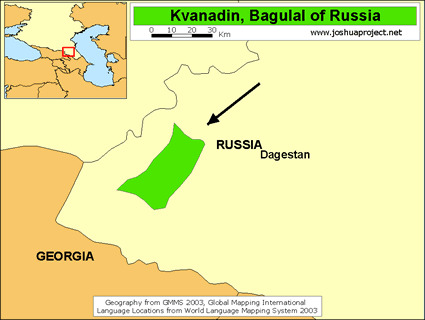

89) Bagvalal, Bagulal, Kwantl Hekwa, Bagolal, Kwanadi, Bagultsy, Kvanadin, Kvanadintsy; Багулалы, багвалинцы, багвалалы, багвалин(ы) («богатыри»), багулал, гаитляло) - lud Awarów – Andi – Dydów z Dagestanu, mówiący językiem Bagvalal. Od lat trzydziestych XX wieku byli w dużej mierze klasyfikowani i zasymilowani przez Awarów. Jednak w spisie powszechnym z 2002 r. nadal były pewne osoby zgłoszone osobno. Bagwalowie są muzułmanami sunnickimi. Bagvalalowie mieszkają w górskich wioskach w dystrykcie Tsumadinsky w Dagestanie. Nazwy wiosek Bagvalal to: Kvanada, Gimerso, Tlisi, Tlibisho, Khushtada i Tlondada. W 1926 roku było 3054 Bagvalalów.
Grupa etniczna Awarów. Jeden z ludów dagestańskich grupy ludów Awarów. Liczba osób: od 1 tys. do 10 tys. osób. Mieszkają w zachodnim Dagestanie. Wierzący to muzułmanie sunnici. Bagulowie (Bagvalowie) mieszkają we wsiach obwodu Tsumadinsky - Khushtada, Chalo (stara nazwa to Talitel), Tlenkhori, Tlondoda, Kvanada, Gimerso, we wsiach regionu Achvakhsky - Tlibisho, Tlisi, a także częściowo we wsiach regionu Khasavyurt - Kokrek i Mutsalaul. Wielu migrantów z Bagvalin mieszka także w innych wioskach dystryktów Khasavyurt, Kizlyar, Babayurt i Kizilyurt. Bagualowie osiedlili się na północnym zboczu grzbietu Bogosskiego, na prawym brzegu Andiyskoe Koisu. Mieszkają zwięźle w sąsiednich wioskach Chusztada, Tlondoda, Kvanada, Gimerso (okręg Tsumadinsky), Tlibisho, Tlisi (okręg Achwachski). Obecnie migranci Bagulal mieszkają zwięźle we wsi Chalo (dystrykt Tsumadinsky). Bagulowie żyją w rozproszeniu w osadach przesiedleńczych w okręgach Kizlyar, Khasavyurt i Kizilyurt. Przed rewolucją administracyjnie Bagulowie byli częścią naibów Karata w dystrykcie andyjskim. Według spisu ludności z 1926 r. w ZSRR mieszkało 3054 Bagulali. W kolejnych spisach powszechnych ZSRR, Bagulali nie byli identyfikowani jako grupa etniczna, ale byli zaliczani do Awarów. Według badań naukowych w 1958 r. było ich 4500, a w 1967 r. – 4 tysiące osób. Według spisu powszechnego z 2002 roku w Rosji mieszkało 40 Bagulali, którzy zaliczani byli do grupy etnicznej Awarów. Spis powszechny z 2010 roku wykazał w kraju jedynie 5 Bagulali, mieszkańców miasta. Bagulalas nie mają własnego imienia. Na określenie mieszkańców prawego brzegu rzeki używano etnonimu „Bagvalians” (od awar. Bagvalal). Andyjscy Koisu – właściwie Bagvalowie i Tindinowie. Sami Bagulowie nazywają siebie nazwą wsi: Khusari – Khushtadins, Gyinduri – Tlondodins, Gyemeri – Gimersinians, Kovandi – Kvanadins, Gyibishchirdi – Tlibischinians. Od końca I tysiąclecia p.n.e. stowarzyszenie plemienne Bagulal było częścią związku Di-duri (Dido). Wraz z jego upadkiem, począwszy od XV wieku, lud Bagulal zjednoczył się w związek gmin wiejskich Bagulal z centrum we wsi Chusztada. W XIV wieku przeszli na islam. Od 1921 r. w ramach Dagestańskiej Autonomicznej Socjalistycznej Republiki Radzieckiej (od 1991 r. – Republiki Dagestanu). Bagulowie, podobnie jak inne ludy andyjskiej podgrupy językowej, w XIX wieku weszli w skład Rosji. Językiem jest Bagulal, który ma dialekty Chusztada, Tlondodin i Tlibishin. Gramatycznie język Bagvalian jest podobny do języków Chamalin i Tindin, a Bagulal i Tindin były kiedyś uważane za nawet różne dialekty tego samego języka. Języki awarskie, rosyjskie i czeczeńskie są szeroko rozpowszechnione. Pismo w języku awarskim na podstawie grafiki rosyjskiej.
Lud Bagvalal z zachodniego Dagestanu mówi swoim własnym, odrębnym językiem i mieszka w sześciu głównych wioskach na dużych wysokościach. Zima wśród ludów wysokiego Kaukazu, takich jak Bagvalal, trwa od końca września do końca kwietnia. Grzbiet nad wioską Bagvalal w Kvanada znajduje się na wysokości 8500 stóp. Na południowy wschód od wioski Tlondada góry wznoszą się na wysokość 3000 metrów. Śnieg pokrywa wioski Bagvalal zazwyczaj od października do końca kwietnia. Aby bydło i owce przetrwały zimę, Bagvalal musi w lipcu, sierpniu i wrześniu masowo zbierać siano z pobliskich wzgórz. Przechowują także i marynują plony na zimę, a mieszkańcy mają nadzieję, że pojazdy z napędem na 4 koła będą mogły kilkakrotnie w okresie zimowym kilkakrotnie wjeżdżać i wyjeżdżać z regionu w celu uzupełnienia zapasów. Bagvalalowie są surowi, mają w wielu aspektach zaciekłość i niewiele elementów wdzięku. Praktykują tradycyjny islam sunnicki, z jego nakazami prawości uczynków i odległym, surowym Bogiem Allahem. Od stuleci wśród Bagvalal panuje wrażenie „wiecznej zimy i nigdy Bożego Narodzenia”.
0 notes
Text
Artur Beterbiev would consider moving up for Oleksandr Usyk fight but Anthony Yarde defence comes first | Boxing News
Some fighters let their fists do the talking.
In Artur Beterbiev’s case, their message would be clear. Be afraid. With a 100 per cent knockout ratio, an unbeaten record and three world title belts, he is possibly the scariest man in the boxing world today.
Beterbiev, born in Khasavyurt in Russia but based Montreal, is undefeated in his 18 pro bouts and the unified WBO, WBC and IBF…

View On WordPress
0 notes
Text
Five injured in gas explosion in Dagestan’s Khasavyurt
Five injured in gas explosion in Dagestan’s Khasavyurt
Five people, according to preliminary data, were injured in a
gas explosion in Dagestan’s Khasavyurt, two of them were
hospitalized, city administration spokesman Najiyulla Abdulayev
said Sunday, Trend reports citing TASS.
“According to preliminary information, five people were injured;
three of them received medical aid at home. Two were hospitalized
and are being provided with all necessary…
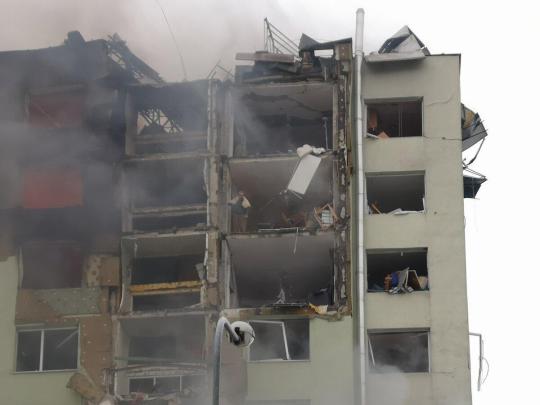
View On WordPress
0 notes
Text
Light earthquake, 4.6 mag was detected near Alkhan-Yurt in Russia
Earthquake News on http://www.earthquakenewstoday.com/2020/12/13/light-earthquake-4-6-mag-was-detected-near-alkhan-yurt-in-russia/
Light earthquake, 4.6 mag was detected near Alkhan-Yurt in Russia
A light earthquake magnitude 4.6 (ml/mb) has occurred on Sunday near Vladikavkaz, Groznyy, Nazran’, Khasavyurt, Ordzhonikidzevskaya, Staryy Malgobek, Malgobek, Russia. The temblor has occurred at 13:05:01/1:05 pm (UTC/GMT) at a depth of 10 km (6 miles). How did you react? Was there any damage?
#Alkhan-Yurt#Groznyy#Kargalinskaya#Khasavyurt#Kizlyar#Malgobek#Mozdok#Nazran’#Ordzhonikidzevskaya#Russia#Staryy Malgobek#Vladikavkaz
0 notes
Note
🤍 (hoping to get places whose language I speak pls)
Let's see hehe
So, these will be your new homes for the next 10 years:
Calle Oslo 16, Móstoles, Madrid, Spain [closest Metro Station is Manuela Malasaña, line 12]
Avicenna District, Dushanbe, Dushanbe, Tajikistan
Ulitsa Kaziyav Ali 76, Khasavyurt, Dagestan, Russia
Quartier Yambassa, Yaoundé, Centre, Cameroon
810 38 Street West, Mayfair, Saskatoon, Saskatchewan, Canada
44 Eyre Street, North Ward, Townsville, Queensland, Australia
2-chome-11-400, Akenokita, Oita, Oita, Japan
9ème Avenue, Nyakabiga, Bujumbura, Bujumbura Mairie, Burundi
Rua Vera Cruz 92, Vila de Cava, Nova Iguaçu, Rio de Janeiro, Brazil [closest Train Station is Comendador Soares, Japeri line]
Ulitsa Mirzo Tursunzode, Bokhtar, Khatlon, Tajikistan
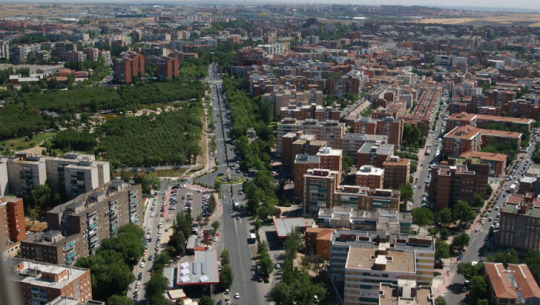

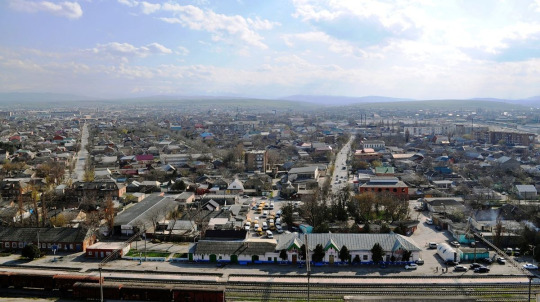
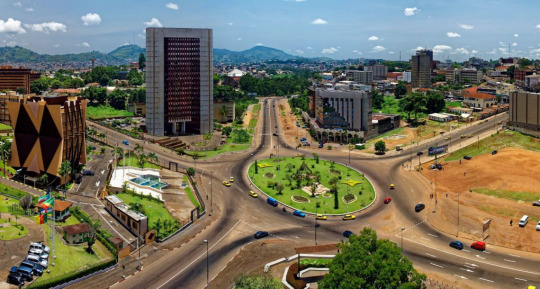
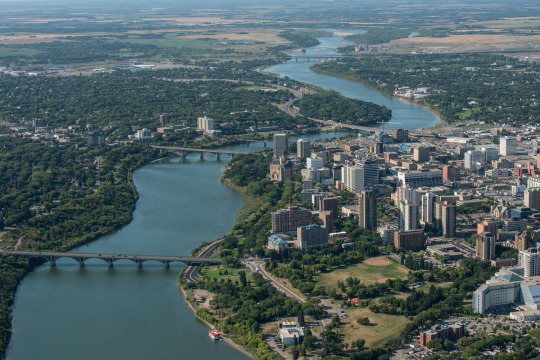

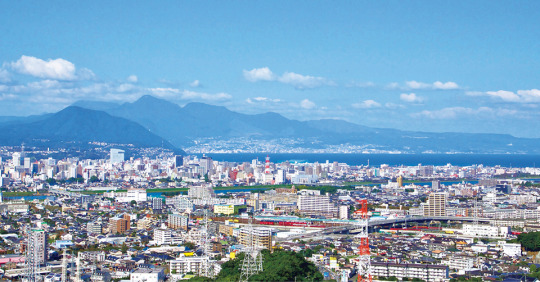
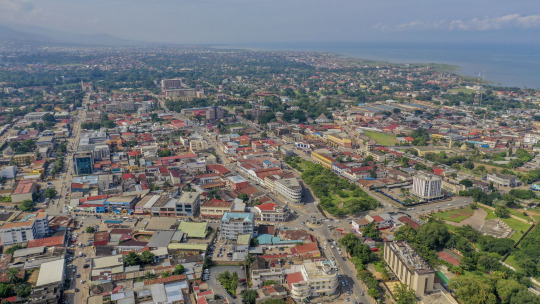
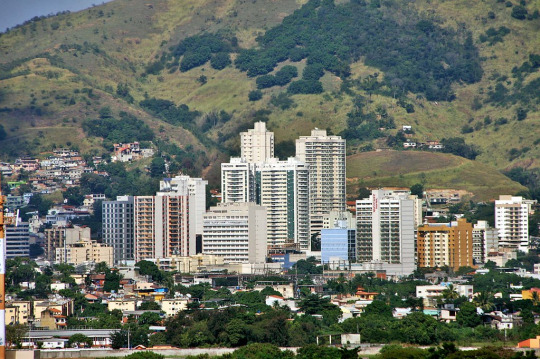
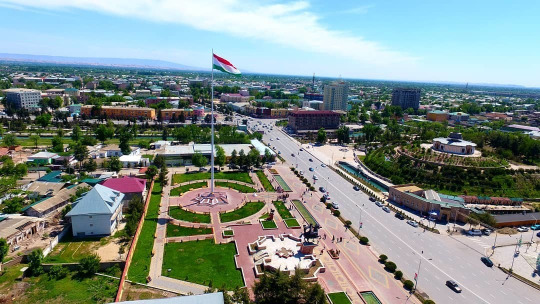
10 cities to live in ask
#ask#well...it certainly is interesting and varied#i screamed when i saw móstoles djsdjs#and i guess you boss likes tajikistan?#you might have to learn at least russian
1 note
·
View note
Text
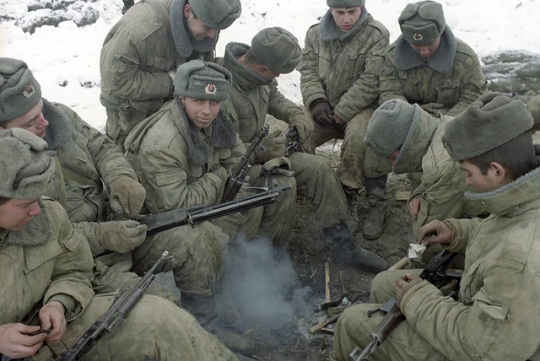
Russian soldiers in Khasavyurt, January 1995.
18 notes
·
View notes
Text
A series of anti-Semitic incidents across the North Caucasus has drawn condemnation from the North Caucasus Coordinating Center for Muslims, while Dagestan Governor Sergey Melikov attributed the actions to “false information” spread by “outside provocateurs.”
On October 28, in Khasavyurt, Dagestan, locals demonstrated outside the Flamingo hotel, following the spread of online rumors suggesting that Israeli refugees were staying there and that the hotel was “full of Jews.” The Telegram channel ChP Dagestan reported that a group gathered outside the hotel several hours after a video showing a person with a supposedly “Israeli appearance” near the premises circulated online. The crowd demanded that hotel guests come to the windows, and, when they did not comply, the group started throwing stones at the building.
According to the news site Caucasian Knot, police officers who arrived at the scene allowed several of the demonstrators to enter the hotel so they could verify that there were no Israeli citizens inside. Subsequently, the crowd dispersed. A sign hung on the hotel entrance after the demonstration reads: “Entrance is strictly prohibited for foreign citizens of ISRAEL (JEWS)!!! (AND THEY AREN’T STAYING HERE!!!!!)”
On the same day, unsanctioned anti-Israeli rallies took place in Makhachkala’s Lenin Square and in Cherkessk, the capital of Karachay-Cherkessia. Demonstrators in Cherkessk demanded “Israeli refugees not be allowed to enter the region” and ethnic Jews be expelled from the area. A government representative, who came out to talk to the demonstrators, said there were no grounds for expulsion.
The following morning, October 29, unknown individuals set fire to an under-construction Jewish cultural center in Nalchik. The assailants threw burning tires onto the property and wrote the phrase “death to Jews” on the wall.
Commenting on the incidents in Khasavyurt and Makhachkala, Dagestan Governor Sergey Melikov blamed outside misinformation, “spread by enemies of Russia,” and said that the people involved were “hotheads” who “allowed themselves to be manipulated” but also noted that “the incident in no way reflects well on [the perpetrators].” He called on Dagestanis “to counter any attempts to divide society.” “Today, our prayers are with the people of Palestine,” Melikov also stated.
The North Caucasus Coordinating Center for Muslims has condemned the anti-Semitic actions. They expressed their support for Palestine but emphasized that “Muslims of the North Caucasus cannot be on the side of hatred and intolerance towards other peoples and religions.” They added that “there is no place for anti-Semitism in the region.”
Dagestan’s Jewish community has not ruled out the possibility that it will need to evacuate from the region. “The situation is very difficult in Dagestan. People from the [Jewish] community are afraid, they’re calling, and I don’t know what advice to give them,” said Ovadia Osakov, a representative of Russia’s Chief Rabbinate in the republic. In addition, he said, he doesn’t know where people would evacuate to, as “Russia isn’t a refuge: Russia has also had pogroms.”
4 notes
·
View notes
Text
Languages of the world
Kumyk (къумукъ тил)
Basic facts
Number of native speakers: 450,000
Official language: Dagestan (Russia)
Language of diaspora: Belarus, Kazakhstan, Latvia, Ukraine, Uzbekistan, Turkey
Script: Cyrillic, 39 letters
Grammatical cases: 6
Linguistic typology: agglutinative, SOV
Language family: Turkic, Common Turkic, Kipchak, Kipchak-Cuman
Number of dialects: 5
History
7th-10th centuries - formation of the language
13th century-1928 - Arabic script
1848 - first grammar of Kumyk
1929-1938 - shift to the Latin alphabet
1938 - adoption of Cyrillic
Writing system and pronunciation
These are the letters that make up the alphabet: а б в г гъ гь д е ё ж з и й к къ л м н нг о оь п р с т у уь ф х ц ч ш щ ъ ы ь э ю я.
ф, ц, and щ only appear in Russian loanwords.
Stress mainly falls on the last syllable.
Grammar
Nouns have two numbers (singular and plural) and six cases (nominative, possessive, dative-directive, accusative, locative, and ablative). There is no gender, but nouns can be animate or inanimate.
There are no articles, and adjectives are placed before the noun and take neither the plural nor the case markers.
Verbs are conjugated for tense, mood, aspect (perfective and imperfective), voice (active, reflexive, passive, collective, coercitive), person, and number.
Dialects
There are five dialects: Khasavyurt, Buinak, Kaitak, Tauly, and Ter. The standard language is based on the Khasavyurt and Buinak dialects.
The Kaitak dialect is distinctive in that it has no analogues.
14 notes
·
View notes
Photo

❖СЕТЕВОЙ-НЕ МОЕ❖ . ✿Именно так я утверждала 3-4 года назад. Было много предложений, но я упорно стояла на своем. ⠀ ❖И просто, однажды поняв, что в работе по найму я просто живу с зарплаты до зарплаты, что моя зарплата уже заранее расписана на месяц, я начала искать удаленную работу, чтоб получить дополнительный доход. ⠀ ❖Это были и студенческие работы, и какие-то лайки за деньги. В этот период мне снова предложили Сетевой и я сказала "попробую". ⠀ ❖На самом деле проблема изначально была не в сетевом, а в его неправильном изложении. Т.е. мне предлагали все, но не объясняли суть этого бизнеса. Я решила разобраться сама. ⠀ ❖Увидев масштабы, чеки людей.....меня осенило.... ⠀ ✿Это такие же люди, если они смогли, смогу и я! ⠀ ❖А дальше....❖ставь лайк и читай дальше мою позицию сетевого бизнеса😉 (at Khasavyurt) https://www.instagram.com/p/B6eApUUAJPg/?igshid=py6k6ok9pajh
1 note
·
View note
Text
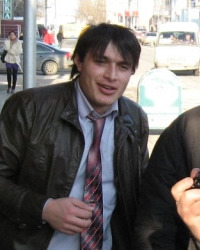

84) Akkin - mają silną tożsamość, mimo że w oficjalnych statystykach spisowych zazwyczaj jest określany mianem „Czeczena”. Dla Czeczenów Akkin to Akkin. Dla Rosjan Akkin to Czeczen. Dla Akkina Akkin to Akkin. Mówią odrębnym dialektem języka czeczeńskiego i żyją wśród skupisk wiosek i miasteczek na zachodnim krańcu Dagestanu, otaczających główne miasto Khasavyurt. Starożytna ojczyzna Akkinów znajdowała się w skrajnie zachodniej Czeczenii i wschodniej Inguszetii. W historii przedsowieckiej wielu Akkinów wyemigrowało na wschód, w stronę przygranicznego regionu Dagestanu i Czeczenii, w pobliżu Khasavyurt. W 1944 roku, oskarżeni wraz z Czeczenami o kolaborację z nazistami, Akkinowie zostali masowo deportowani do Azji Środkowej przez stalinowskie KGB. Trzynaście lat później, za Chruszczowa, Akkinom pozwolono wrócić, ale stanęli w obliczu ogromnego zamieszania, ponieważ wielu dagestańskich Laków i Awarów zostało już przesiedlonych do starych wiosek Akkin w zachodnim Dagestanie. Od końca lat pięćdziesiątych XX wieku do początków XXI wieku w związku z kwestiami przesiedleń szerzyły się zamieszanie i konflikty. W końcu niektórzy Lakowie przenieśli się do innych regionów nizinnych; wielu Akkinów w końcu osiedliło się w niektórych ze swoich pierwotnych miast w zachodnim Dagestanie lub w pobliżu Khasavyurt. Niektórzy Akkini żyją także w pierwotnym regionie skrajnej zachodniej Czeczenii i wschodniej Inguszetii. Uchodźców z Akkin można spotkać w wielu ośrodkach dla azylantów w Europie, razem z innymi uchodźcami z Czeczenii, Inguszy i Dagestanu. Akkinowie żyją w korytarzu transportowym pomiędzy Machaczkałą, stolicą Dagestanu na wschodzie, a Groznym, stolicą Czeczenii na zachodzie. Jednym z „eksportów” tym korytarzem jest ciągła rywalizacja pomiędzy frakcjami ekstremistycznych islamistów. Tradycyjnie Akkin praktykuje suficki islam sunnicki; lecz zewnętrzni, gorliwi radykałowie sunnici, misjonarze, salafici (wahabici) próbowali wykorzenić sufickie praktyki islamu w całym Dagestanie. Ten wewnętrzny konflikt religijny miesza się z aktywnym radykalnym powstaniem muzułmańskim przeciwko tradycyjnym siłom religijnym i politycznym. Ciągły konflikt wrze, nawet do chwili obecnej. Akkinowie są dotknięci tym brutalnym/gorliwym islamem, ponieważ młodzi mężczyźni są werbowani i namawiani (nawet wymuszani) do udziału w bojownikach lub wciągani w bitwy toczone w ich sąsiedztwie.
0 notes